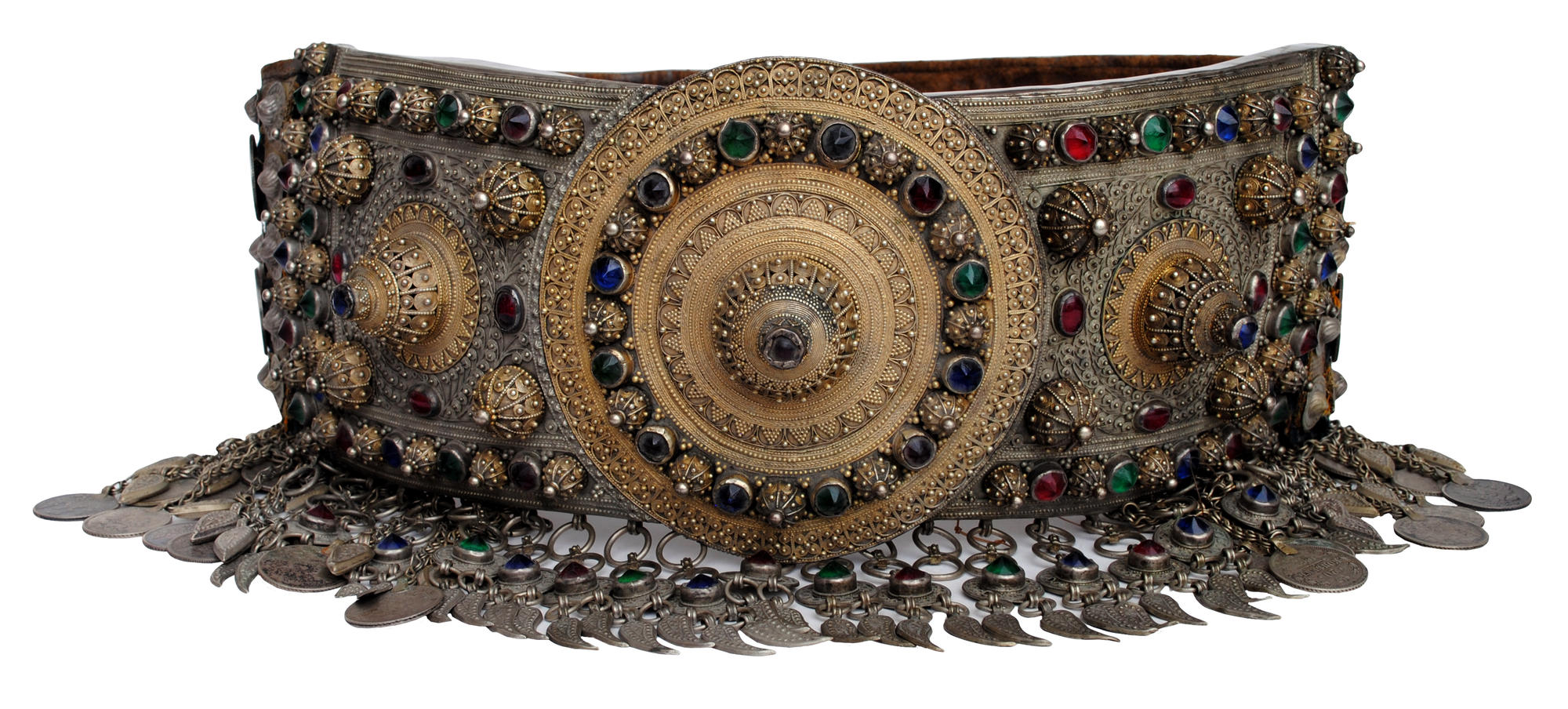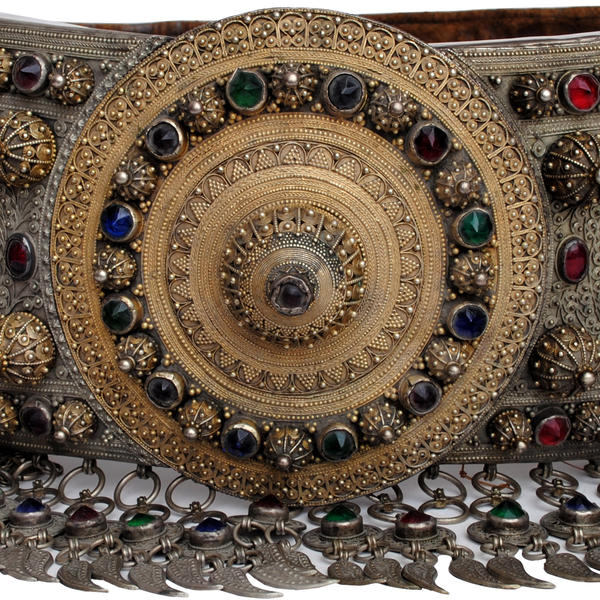Women’s costumes of many peoples of Dagestan were profusely decorated with various sew-on and removable items. Each detail had its meaning. Belts decorated with metallic elements and buckles were worn mostly by Lezgins, but sometimes their neighbours (Dargins, Laks and South Avars) also wore them.
In the 19th century, Lezgin women wore a kind of overdress called valchag. It was a slim fit velvet or sateen dress that was worn over an undershirt. It was also referred to as women’s variant of a chokha. The valchag always went with an ornate silver belt. You can see one of such belts in the collection of Dagestan Museum of Fine Arts.
In the 19th century, Lezgin women wore a kind of overdress called valchag. It was a slim fit velvet or sateen dress that was worn over an undershirt. It was also referred to as women’s variant of a chokha. The valchag always went with an ornate silver belt. You can see one of such belts in the collection of Dagestan Museum of Fine Arts.



